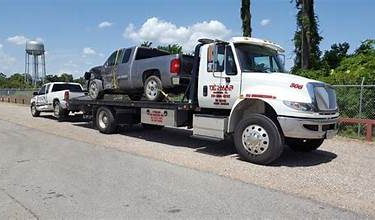In the dynamic world of automotive manufacturing, competition is a constant. However, when the tides of market demand ebb, and sales growth stagnates, the rivalry among automakers intensifies significantly. This intensification isn’t merely about survival; it’s about thriving in adverse conditions and seizing opportunities amidst challenges.
Understanding the Slow Sales Growth Dynamics
Before delving into the impact of slow sales growth on the competitive landscape, it’s crucial to comprehend the factors contributing to this phenomenon. Several market forces contribute to a slump in sales:
Economic Cycles: Economic downturns or stagnation can result in reduced consumer spending and confidence, leading to a decline in car purchases.
Market Saturation: Mature markets often face saturation, where most consumers already own vehicles, reducing the immediate demand for new cars.
Changing Preferences: Shifting consumer preferences, such as a growing interest in ride-sharing services or environmentally friendly vehicles, can alter the demand landscape.
Supply Chain Disruptions: Unforeseen events like supply chain disruptions, raw material shortages, or geopolitical issues can impact production capacities, affecting the availability of vehicles.
Impact on Competition Among Automakers
During periods of sluggish sales growth, competition among automakers escalates significantly due to several factors:
Pricing Wars: Intensified competition often leads to aggressive pricing strategies to attract hesitant buyers. This can result in price wars, where automakers offer discounts, incentives, or bundled services, impacting profit margins.
Innovation and Differentiation: To stand out, automakers invest in innovation and differentiation. This might involve advancements in technology, design, or sustainability efforts to capture the attention of discerning consumers.
Marketing and Branding: Brands ramp up marketing efforts to maintain visibility and retain consumer mindshare. Creative marketing campaigns, endorsements, and strategic partnerships become crucial to stay relevant.
Focus on Customer Experience: Enhancing the overall customer experience becomes pivotal. Automakers emphasize excellent after-sales service, warranty offerings, and personalized experiences to retain existing customers and attract new ones.
Market Segment Strategies: With a more competitive landscape, automakers might reassess their market segment strategies. They might focus on specific niches, such as electric vehicles or SUVs, to capitalize on growing trends.

Implications of Intensified Competition
While intensified competition brings challenges, it also presents opportunities and significant implications for the industry:
Innovative Advancements: Competition fosters innovation. Automakers are pushed to develop cutting-edge technologies, enhancing vehicle safety, connectivity, and sustainability.
Consumer Benefit: Consumers are the ultimate beneficiaries as they witness improved quality, features, and more competitive pricing due to market rivalry.
Consolidation and Restructuring: Intense competition might lead to mergers, acquisitions, or strategic alliances among automakers seeking synergies and cost efficiencies.
Global Market Dynamics: Intensified competition in one region can have ripple effects globally, influencing production strategies, supply chains, and market penetration strategies.
Industry Evolution: Slow sales growth periods often prompt industry-wide introspection, leading to the emergence of new business models and strategies to adapt to changing market dynamics.
Navigating Forward
In navigating the competitive landscape during slow sales growth periods, automakers must adopt a multi-faceted approach:
Strategic Innovation: Embrace innovation across technology, design, and sustainability to capture consumer interest and gain a competitive edge.
Adaptive Marketing Strategies: Tailor marketing efforts to resonate with evolving consumer preferences while highlighting unique selling propositions.
Agile Business Models: Remain adaptable and agile, ready to pivot strategies based on market shifts and emerging trends.
Collaborative Initiatives: Explore collaborations and partnerships, leveraging synergies to enhance offerings and minimize costs.
Customer-Centric Approach: Prioritize customer satisfaction and experience to foster loyalty and gain an edge in a fiercely competitive landscape.

Conclusion
The automotive industry’s competitive landscape during periods of slow sales growth represents a battleground where innovation, marketing prowess, and adaptability play pivotal roles. Automakers navigating this landscape must not only weather the storm but also leverage these challenging times as opportunities for growth, evolution, and sustainable progress in a rapidly changing market.




